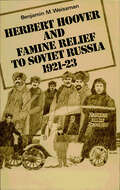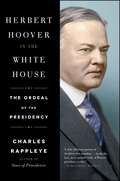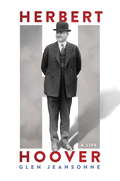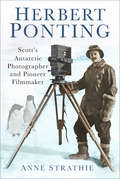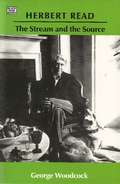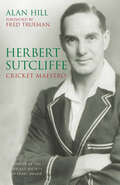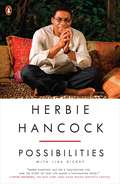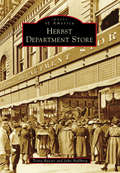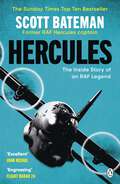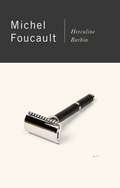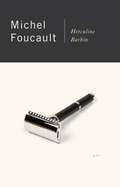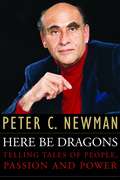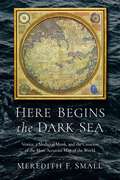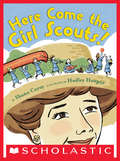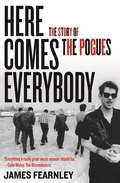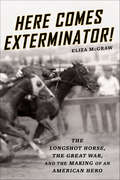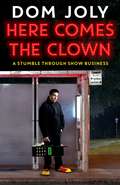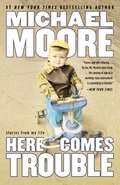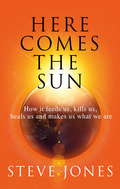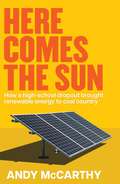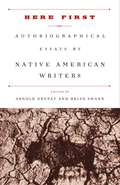- Table View
- List View
Herbert Hoover and Famine Relief to Soviet Russia, 1921–1923
by Benjamin M. WeissmanIn 1921 one of the most devastating famines in history threatened the lives of millions of Russians as well as the continuance of Soviet rule. Responding to a plea for help from the Soviet government, the American Relief Administration (ARA) agreed to provide famine relief in the stricken areas. The ARA was a private relief organization headed by Herbert Hoover, then U.S. secretary of commerce and one of the best-known Americans of his time for his spectacular success in rescuing the population of Belgium from starvation during World War I and in feeding millions of Europeans during the Armistice. Hoover was also a retired capitalist of considerable wealth, a champion of Republican liberalism, and a leading opponent of recognition of Soviet Russia. Lenin—head of the Soviet government, leader of the Bolshevik party, and living symbol of world revolution—was the antithesis of the ARA's chief. This book studies the personalities, motives, and modi operandi of these two celebrated figures, both as individuals and as representatives of their societies. At the same time it considers the relief mission itself, which has been the subject of continuing controversy for fifty years. Its partisans see it as a charitable, nonpolitical enterprise, while its enemies judge it an anti-Soviet intervention entirely devoid of humanitarian purpose. Herbert Hoover and Famine Relief for Soviet Russia is the first major attempt by an American scholar to reexamine the ARA mission, on the basis of much material made available since the ARA's 1927 official history. What emerges is, on the one hand, a painstaking examination of the historical details of ARA's mission and, on the other hand, a philosophic essay relating the ARA to broader questions of U.S.-Soviet relations the ideological antitheses of Hoover and Lenin. The author concludes that both sides overcame their ideological antagonisms and made possible a spectacularly successful relief mission that inspired the vain hope that a new era in Soviet-American relations had begun.
Herbert Hoover in the White House: The Ordeal of the Presidency
by Charles Rappleye"A deft, filled-out portrait of the thirty-first president...by far the best, most readable study of Hoover's presidency to date." --Publishers Weekly Rappleye's surprising portrait of a Depression-era president Herbert Hoover reveals a very different figure than the usual Hoover, engaged and active but loathe to experiment and conscious of his inability to convey hope to the country.Herbert Clark Hoover was the thirty-first President of the United States. He served one term, from 1929 to 1933. Often considered placid, passive, unsympathetic, and even paralyzed by national events, Hoover faced an uphill battle in the face of the Great Depression. Many historians dismiss him as merely ineffective. But in Herbert Hoover in the White House, Charles Rappleye draws on rare and intimate sources--memoirs and diaries and thousands of documents kept by members of his cabinet and close advisors--to reveal a very different figure than the one often portrayed. The real Hoover, argues Rappleye, just lacked the tools of leadership. The Hoover presented here will come as a surprise to both his longtime defenders and his many critics. In public Hoover was shy and retiring, but in private he is revealed as a man of passion and sometimes of fury, a man who intrigued against his enemies while fulminating over plots against him. Rappleye describes him as more sophisticated and more active in economic policy than is often acknowledged. We see Hoover watching a sunny (and he thought ignorant) FDR on the horizon. FDR did not "cure" the depression, but he experimented with steps that relieved it. Most importantly he broke the mood of doom almost immediately. The Hoover we see here--bright, well meaning, energetic--lacked the single critical element to succeed as president. He had a first-class mind and a second-class temperament. Herbert Hoover in the White House is an object lesson in the most, perhaps only, talent needed to be a successful president--the temperament of leadership.
Herbert Hoover: A Life
by Glen JeansonnePrizewinning historian Glen Jeansonne delves into the life of our most misunderstood president, offering up a surprising new portrait of Herbert Hoover—dismissing previous assumptions and revealing a political Progressive in the mold of Theodore Roosevelt, and the most resourceful American since Benjamin Franklin. <P><P> Orphaned at an early age and raised with strict Quaker values, Hoover earned his way through Stanford University. His hardworking ethic drove him to a successful career as an engineer and multinational businessman. After the Great War, he led a humanitarian effort that fed millions of Europeans left destitute, arguably saving more lives than any man in history. As commerce secretary under President Coolidge, Hoover helped modernize and galvanize American industry, and orchestrated the rehabilitation of the Mississippi Valley after the Great Flood of 1927. <P> As president, Herbert Hoover became the first chief executive to harness federal power to combat a crippling global recession. Though Hoover is often remembered as a “do-nothing” president, Jeansonne convincingly portrays a steadfast leader who challenged congress on an array of legislation that laid the groundwork for the New Deal. In addition, Hoover reformed America’s prisons, improved worker safety, and fought for better health and welfare for children. Unfairly attacked by Franklin D. Roosevelt and blamed for the Depression, Hoover was swept out of office in a landslide. Yet as FDR’s government grew into a bureaucratic behemoth, Hoover became the moral voice of the GOP and a champion of Republican principles—a legacy re-ignited by Ronald Reagan and which still endures today.<P> A compelling and rich examination of his character, accomplishments and failings, this is the magnificent biography of Herbert Hoover we have long waited for.
Herbert Ponting: Scott’s Antarctic Photographer and Pioneer Filmmaker
by Anne StrathieBorn in Salisbury in 1870, Ponting was raised and educated in Carlisle, Preston and Southport. While working in a bank in Liverpool, Ponting bought his first Kodak compact camera. A decade later – after running a California fruit ranch and working in mining – he was a professional photographer, known for stereoviews of America, Japan and other parts of Asia and for illustrated magazine articles. When Ponting returned to Britain in 1907, his Japanese and other photographs were exhibited and published widely. In 1909, while working on a memoir of Japan, he signed up for Scott's Terra Nova expedition – two years later, he was back in London, working on thousands of photographs and film footage of the expedition. In February 1913, the news broke that Scott and his South Pole companions had died. Overnight Ponting's photographs became world famous. But in 1914, while Ponting was giving cinema-lectures on the expedition, war broke out. His offers to serve as a photographer or correspondent were declined, but in 1918 he and Ernest Shackleton joined a government-backed expedition to Spitsbergen. During the turbulent 1920s and 1930s Ponting wrote his memoir The Great White South, reworked his Antarctic films into full-length silent and 'talkie' versions and worked on cinematic inventions. Anne Strathie's new biography includes previously unpublished material and images, including on Ponting's correspondence with photographic magnate George Eastman, his friendship with Shackleton's photographer Frank Hurley, his late-life romance with singer Glae Carrodus and the establishment of his photographic and cinematic legacy.
Herbert Read
by George WoodcockDuring his lifetime, Herbert Read (1893-1968) acquired a considerable international reputation. Poet and anarchist; novelist and biographer; critic of art, literature, and life; aesthetic philosopher; and revolutionary theorist of education, Read was in a unique place as an interpreter of his time. Few writers have probed so deeply into the nature of the prevailing culture, and none brought together the insights of modern philosophers and critics, poets and artists, psychologists and social scientists, as Read did.Best known as an art critic and follower of the theories of Carl Jung, Read was a pioneer in the English-speaking world for his use of psychoanalysis as a tool for art and literary criticism. Although knighted by Prime Minister Winston Churchill in 1953 for "services to literature," Read regarded himself, politically, as an anarchist.This work, by fellow anarchist George Woodcock, is a critical study of the intellectual career of Herbert Read, as well as a thorough study of Read's criticism, creative writing, art theory, and anarchist philosophy. Woodcock does not divide Read's writings on politics from those on art and culture as Read saw art, culture, and politics as a single expression of human consciousness. Comprehensive and authoritative, it is an impressive volume that presents a unified portrait of one of England's most distinguished twentieth-century critics.George Woodcock (1912-1995)--award-winning poet, author, essayist, and widely known as a literary journalist and historian--published more than ninety titles on history, biography, philosophy, poetry, and literary criticism.
Herbert Sutcliffe: Cricket Maestro
by Alan Hill Fred TruemanA national hero in his playing days, Herbert Sutcliffe belongs to a select band of all-time cricketing greats. Alan Hill’s award-winning biography of the Yorkshire and England batsman charts his extraordinary transformation from cobbler’s apprentice to urbane gentleman: one of the coolest, most determined and technically accomplished practitioners the game has ever known.Blessed with the looks of a matinee idol, Sutcliffe was a complex, often enigmatic, personality. As a cricketer, he was touched with genius. His career spanned exactly the years between the wars and he performed with distinction in every one of those seasons. He scored 50,138 first-class runs, including 149 centuries, and his remarkable Test average of 60.73 is the highest for an English batsman – higher than those of Hobbs, Hammond or Hutton.Herbert Sutcliffe: Cricket Maestro calls upon the reminiscences of Bob Wyatt, Sir Donald Bradman, Sir Len Hutton and Les Ames among other illustrious contemporaries, to evoke the splendour of Sutcliffe’s achievements for Yorkshire and England, and to bring to life the vivacious story of one of the greatest batsmen ever.
Herbie Hancock: Possibilities
by Lisa Dickey Herbie HancockThe long-awaited memoir by one of the most influential and beloved musicians of our timeIn Herbie Hancock the legendary jazz musician and composer reflects on a life and a thriving career that has spanned seven decades. <P><P>A true innovator, Hancock has had an enormous influence on both acoustic and electric jazz, R&B and hip-hop, with his ongoing exploration of different musical genres, winning fourteen Grammy awards along the way.From his beginnings as a child prodigy to his work in Miles Davis's second great quintet; from his innovations as the leader of his own groundbreaking sextet to his collaborations with everyone from Wayne Shorter to Joni Mitchell and Stevie Wonder; Herbie Hancock reveals the method behind Hancock's undeniable musical genius.Hancock shares his musical influences, colorful behind-the-scenes stories, his long and happy marriage, and how Buddhism inspires him creatively and personally. Honest, enlightening, and as electrifyingly vital as the man who wrote it, Herbie Hancock promises to be an invaluable contribution to jazz literature and a must-read for fans and music lovers.
Herbst Department Store
by Trista Raezer John HallbergHerbst Department Store held sway on Fargo's Broadway for nearly 90 years. In 1887, a young merchant named Isaac Herbst came to Fargo to seek his fortune. He proved to be a dynamic salesman, and by 1892 he had founded Herbst Department Store. The business was destroyed a year later in the Great Fire of 1893, which wiped out most of downtown. Isaac rebuilt his business and expanded it until his death in 1910. The department store was continued by his widow, sons, grandsons, and a large group of loyal employees. The Herbst family took great pride in the community and was active in civic affairs. In the 1970s and 1980s, many customers abandoned downtown Fargo for West Acres Shopping Center and other large retail chains. Herbst was the last large department store remaining downtown until it closed in 1982. Images of America: Herbst Department Store shines a light on a business that had a great impact on Fargo's vibrant downtown and community.
Hercules: The action-packed Sunday Times bestselling account of flying the legendary RAF aircraft
by Scott BatemanTHE SUNDAY TIMES TOP 10 BESTSELLERRead the legendary story of the Lockheed C-130 Hercules aircraft, seen through the eyes of former RAF captain Scott Bateman'An engaging and revealing read' JOHN NICHOL---Anytime, Anywhere, Anyhow. Whether it’s war, natural disaster, or humanitarian emergency, for over fifty years the RAF’s Hercules force was the first in and last out of any crisis faced by the UK government around the globe.First conceived in the 1950s, the US-built Lockheed C-130 Hercules earned its spurs flying difficult and dangerous missions in the Vietnam War before entering service with air forces around the world. Originally designed as transport aircraft, the Hercules has been pressed into service as an aerial tanker, gunship, spyplane, air-sea rescuer and bomber.Instantly recognisable, it became synonymous with daring special forces missions like the legendary raid in Entebbe in which dozens of hostages were rescued from the clutches of terrorists. In RAF colours it's seen action on every continent on the planet including Antarctica, flying life and death missions in the Falklands, Lebanon, Iraq, Libya, Afghanistan, Sudan and all points in between.Former RAF Hercules Captain Scott Bateman opens the cockpit to give an action-packed insider’s account of what it’s like to fly this legendary flying machine in peace and war, and at home and abroad, paying tribute to the remarkable men and women who operated this much loved aircraft, and to those comrades in arms who, in doing so, made the ultimate sacrifice.
Herculine Barbin
by Michel Foucault Herculine BarbinWith an eye for the sensual bloom of young schoolgirls, and the torrid style of the romantic novels of her day, Herculine Barbin tells the story of her life as a hermaphrodite. Herculine was designated female at birth. A pious girl in a Catholic orphanage, a bewildered adolescent enchanted by the ripening bodies of her classmates, a passionate lover of another schoolmistress, she is suddenly reclassified as a man. Alone and desolate, he commits suicide at the age of thirty in a miserable attic in Paris. Here, in an erotic diary, is one lost voice from our sexual past. Provocative, articulate, eerily prescient as she imagines her corpse under the probing instruments of scientists, Herculine brings a disturbing perspective to our own notions of sexuality. Michel Foucault, who discovered these memoirs in the archives of the French Department of Public Hygiene, presents them with the graphic medical descriptions of Herculine's body before and after her death. In a striking contrast, a painfully confused young person and the doctors who examine her try to sort out the nature of masculine and feminine at the dawn of the age of modern sexuality. "Herculine Barbin can be savored like a libertine novel. The ingenousness of Herculine, the passionate yet equivocal tenderness which thrusts her into the arms, even into the beds, of her companions, gives these pages a charm strangely erotic...Michel Foucault has a genius for bringing to light texts and reviving destinies outside the ordinary."Le Monde, July 1978
Herculine Barbin: Being the Recently Discovered Memoirs of a Nineteenth-Century French Hermaphrodite
by Michel Foucault Richard McdougallWith an eye for the sensual bloom of young schoolgirls, and the torrid style of the romantic novels of her day, Herculine Barbin tells the story of her life as a hermaphrodite. Herculine was designated female at birth. A pious girl in a Catholic orphanage, a bewildered adolescent enchanted by the ripening bodies of her classmates, a passionate lover of another schoolmistress, she is suddenly reclassified as a man. Alone and desolate, he commits suicide at the age of thirty in a miserable attic in Paris. Here, in an erotic diary, is one lost voice from our sexual past. Provocative, articulate, eerily prescient as she imagines her corpse under the probing instruments of scientists, Herculine brings a disturbing perspective to our own notions of sexuality. Michel Foucault, who discovered these memoirs in the archives of the French Department of Public Hygiene, presents them with the graphic medical descriptions of Herculine's body before and after her death. In a striking contrast, a painfully confused young person and the doctors who examine her try to sort out the nature of masculine and feminine at the dawn of the age of modern sexuality. "Herculine Barbin can be savored like a libertine novel. The ingenousness of Herculine, the passionate yet equivocal tenderness which thrusts her into the arms, even into the beds, of her companions, gives these pages a charm strangely erotic. . . Michel Foucault has a genius for bringing to light texts and reviving destinies outside the ordinary. " Le Monde, July 1978
Herd Behavior in Financial Markets: An Experiment with Financial Market Professionals
by Marco Cipriani Antonio GuarinoA report from the International Monetary Fund.
Here Be Dragons: Telling Tales Of People, Passion and Power
by Peter C. NewmanThe #1 national bestseller now revised and updated with a new Epilogue.Now aged 75, Peter C. Newman at last tells the story of his stranger-than-fiction life. Try to keep up as we follow his many lives: as a pampered child in a Czech chateau; a Jewish kid in short pants being machine-gunned by Nazi fighter planes on the beach at Biarritz, en route to the last ship to escape from France in 1940; as a refugee on an Ontario farm; as an outsider on a scholarship at Upper Canada College; as a Financial Post journalist, then an author whose Renegade in Power made Canadian politics dramatic and disrespectfully exciting for the first time; as the man who revealed the secrets of the rulers of the Canadian business world in The Canadian Establishment, and other huge business success stories, including The Establishment Man, on Conrad Black; or the millionaire who turned his back on business books and tackled Canadian history (Company of Adventurers and other triumphs), in a career where his work has dominated the bestseller lists in politics, business, history, and current affairs.In the midst of all this were his years at the Toronto Star and Maclean's where, as editor, he took the magazine weekly - a huge accomplishment. He is still a legend there, where his columns continue to run.He knew and wrote about every prime minister from Louis St. Laurent to Paul Martin and every prominent Canadian - hero or villain - in between. Yet his most interesting character is - Peter C. Newman. Incredibly, this central figure known to millions of Canadians sees himself as a perennial outsider. In personal terms, the rich little Czech boy whose nannies never stayed talks frankly about his marriages and the women he has known before his ultimate marriage to his beloved Alvy. His enthusiasms - from jazz to the Canadian Navy, not to mention his adventures on his beloved sailboat - make for a rich portrait of an astonishingcharacter, one who never stops being controversial.From the Trade Paperback edition.
Here Begins the Dark Sea: Venice, a Medieval Monk, and the Creation of the Most Accurate Map of the World
by Meredith Francesca SmallThe remarkable story of the cartographic masterpiece—the Venetian mappa mundi—that revolutionized how we see the world.In 1459 a Venetian monk named Fra Mauro completed an astonishing map of the world. Seven feet in diameter, Fra Mauro&’s mappamundi is the oldest and most complete Medieval map to survive into modernity. And in its time, this groundbreaking mappamundi provided the most detailed description of the known world, incorporating accurate observation, and geographic reality, urging viewers to see water and land as they really existed. Fra Mauro's map was the first in history to show that a ship could circumnavigate Africa, and that the Indian &“Sea&” was in fact an ocean, enabling international trade to expand across the globe. Acclaimed anthropologist Meredith F. Small reveals how Fra Mauro&’s mappamundi made cartography into a science rather than a practice based on religion and ancient myths. Here Begins the Dark Sea brings Fra Mauro&’s masterpiece to life as a work of art and a window into Venetian society and culture. In telling the story of this cornerstone of modern cartography, Small takes the reader on a fascinating journey as she explores the human urge to find our way. Here Begins the Dark Sea is a riveting testament to the undeniable impact Fra Mauro and his mappamundi have had over the past five centuries and still holds relevance today.
Here Come the Brides!: Reflections on Lesbian Love and Marriage
by Michele Kort Audrey BilgerMarriage today isn't what it used to be: for better, not for worse. As same-sex weddings are becoming more common, the classic love-story happy ending is taking on a decidedly new twist, everyone has a fresh role to play, and supporters and opponents of gay marriage alike are finding themselves in the midst of a revolution that's redefining marriage-both as a personal choice and as an institution-as we know it. InHere Come the Brides!,editors Audrey Bilger and Michele Kort gather together the voices of women taking part in-and shaping-this major historical shift. Representing a diversity of points of view in terms of race, class, ethnicity, and gender identification, this collection of essays, stories, and visual images takes a multidimensional look at how opening up the traditional order of "man and wife" to include the possibility of "wife and wife" is altering our social landscape. From wedding pictures and images of protest signs to comical anecdotes and sober philosophical analyses,Here Come the Brides!is an exploration of how the legalization of same-sex marriages has irrevocably changed the way lesbians think about their unions and their lives-and a celebration of the dream of lesbian happily-ever-afters.
Here Come the Girl Scouts!: The Amazing All-true Story of Juliette "Daisy" Gordon Low and Her Great Adventure
by Shana CoreyThe amazing, all-true story of the first Girl Scouts and their visionary founder.Juliette Gordon Low--Daisy to her friends and family--was not like most girls of the Victorian era. Prim and proper? BOSH! Dainty and delicate? HOW BORING! She loved the outdoors, and she yearned for adventure! Born into a family of pathfinders and pioneers, she too wanted to make a difference in the world--and nothing would stop her. Combining her ancestors' passion for service with her own adventurous spirit and her belief that girls could do anything, she founded the Girl Scouts. One hundred years later, they continue to have adventures, do good deeds, and make a difference!
Here Comes Everybody: The Story of the Pogues
by James FearnleyThe Pogues injected the fury of punk into Irish folk music and gave the world the troubled, iconic, darkly romantic songwriter Shane MacGowan. Here Comes Everybody is a memoir written by founding member and accordion player James Fearnley, drawn from his personal experiences and the series of journals and correspondence he kept throughout the band's career. Fearnley describes the coalescence of a disparate collection of vagabonds living in the squats of London's Kings Cross, with, at its center, the charismatic MacGowan and his idea of turning Irish traditional music on its head. With beauty, lyricism, and great candor, Fearnley tells the story of how the band watched helplessly as their singer descended into a dark and isolated world of drugs and alcohol, and sets forth the increasingly desperate measures they were forced to take.
Here Comes Exterminator!: The Longshot Horse, the Great War, and the Making of an American Hero
by Eliza McGrawFor fans of Seabiscuit and The Eighty-Dollar Champion, Eliza McGraw tells the story of how a gangling, long-shot Kentucky Derby winner named Exterminator became one of the most beloved racehorses of all time.The father of the Kentucky Derby called him “the greatest all-around Thoroughbred in American racing history.” Sportswriter Grantland Rice simply called him “the greatest racehorse.” Here Comes Exterminator! draws readers into the golden age of racing, with all its ups and downs, the ever-involving interplay of horses and people, and the beauty, grace, fear, and hope that are a daily part of life at the track. Caught between his hotheaded millionaire owner and his knowledgeable trainer, Exterminator captured fans’ affection with his personality, consistency, athleticism, and heart. Exterminator’s staggering success would dramatically change the world of horse-racing. He challenged the notion that American horses would never live up to Europe’s meticulously charted bloodlines and became a patriotic icon of the country after World War I. And his longevity established him as one of the public’s most beloved athletes, paving the way for equine celebrities like Seabiscuit and showing Americans they could claim—and love—a famous racehorse as their own.
Here Comes The Clown
by Dom JolyIn 2004 Dom Joly wrote a spoof autobiography called Look At Me, Look At Me. In Here Comes the Clown, he takes up the story of his life from 14th January 2000 when the very first episode of Trigger Happy TV aired on Channel 4 and everything changed for him. Suddenly he was famous; reality was weirder than any fiction he could conjure up. This is the story of what happened next, through snippets of recollections from his adventures in showbusiness...
Here Comes Trouble: Stories from My Life
by Michael Moore"I had an unusually large-sized head, though this was not uncommon for a baby in the Midwest. The craniums in our part of the country were designed to leave a little extra room for the brain to grow in case one day we found ourselves exposed to something we didn't understand, like a foreign language, or a salad." Michael Moore--Oscar-winning filmmaker, bestselling author, the nation's unofficial provocateur laureate--is back, this time taking on an entirely new role, that of his own meta-Forest Gump. Breaking the autobiographical mode, he presents twenty-four far-ranging, irreverent, and stranger-than-fiction vignettes from his own early life. One moment he's an eleven-year-old boy lost in the Senate and found by Bobby Kennedy; and in the next, he's inside the Bitburg cemetery with a dazed and confused Ronald Reagan. Fast-forwarding to 2003, he stuns the world by uttering the words "We live in fictitious times ... with a fictitious president" in place of the expected "I'd like to thank the Academy." And none of that even comes close to the night the friendly priest at the seminary decides to show him how to perform his own exorcism. Capturing the zeitgeist of the past fifty years, yet deeply personal and unflinchingly honest, HERE COMES TROUBLE takes readers on an unforgettable, take-no-prisoners ride through the life and times of Michael Moore. No one will come away from this book without a sense of surprise about the Michael Moore most of us didn't know. Alternately funny, eye-opening, and moving, it's a book he has been writing-and living-his entire life. The guy who had an uncanny knack for just showing up where history was being made. You will be stunned and surprised to meet the Michael Moore you never knew. Capturing the zeitgeist of the past fifty years, yet deeply personal and unflinchingly honest, HERE COMES TROUBLE takes readers on an unforgettable, take-no-prisoners ride through the life and times of Michael Moore. Alternately funny, eye-opening, and moving, it's the book he has been writing--and living--his entire life.
Here Comes the Sun
by Steve JonesOur sun drives the weather, forms the landscape, feeds and fuels - but sometimes destroys - the creatures that live upon it, controls their patterns of activity, makes chemicals in the skin that cheer up those who bask in its rays, and for the ancients was the seat of divine authority.In Here Comes the Sun, Steve Jones shows how life on Earth is ruled by our nearest star. It is filled with unexpected connections; between the need to stay cool and man's ability to stand upright, between the power of memory and the onset of darkness, between the flow of solar energy through the plants and animals and of wealth through society, and between Joseph Goebbel's 1938 scheme to make Edinburgh the summer capital of a defeated Britain and the widening gap in the life expectancy of Scottish men compared to that of other European men brought on by thnat nation's cloudy climate. Its author charts some of his own research in places hot and cold across the globe on the genetic and evolutionary effects of sunlight on snails, fruit-flies and people and shows how what was once no more an eccentric specialism has grown to become a subject of wide scientific, social and political significance. Stunningly evocative, beautifully written and packed full of insight, Here Comes the Sun is Steve Jones's most personal book to date.
Here Comes the Sun: How a high-school dropout brought renewable energy to coal country
by Andy McCarthyHere Comes the Sun is a story of succeeding in the face of adversity, about finding and following a purpose, and the potholes that can bring you unstuck.Suffering from ADHD at school, misunderstood, tormented and bullied for years, Andy McCarthy was unable to find his pack. When he dropped out in Year 10, his prospects weren't good. He had no idea then that his personal drive and dogged determination would lead to incredible success.At 19, Andy connected his first solar panel and suddenly found himself powered by a purpose: to accelerate the world's transition to renewable energy. Where best to make that happen? Coal country, and a place that has provided Victoria with most of its energy for a century, the Latrobe Valley. From tiny beginnings in his home garage, Andy overcame a tide of ridicule, setbacks and opposition to build one of Australia's largest employers in the renewable energy sector: Gippsland Solar.But his obsession took a terrible toll. When he was rushed to hospital crippled by panic attacks, Andy realised something had to give. Then, in ways that no one expected, he turned his life around again.Here Comes the Sun is a candid, swashbuckling and electrifying tale for anyone interested in renewable energy, and in what it takes to run a business and follow a purpose without burning out.
Here Comes the Sun: How a high-school dropout brought renewable energy to coal country
by Andy McCarthyHere Comes the Sun is a story of succeeding in the face of adversity, about finding and following a purpose, and the potholes that can bring you unstuck.Suffering from ADHD at school, misunderstood, tormented and bullied for years, Andy McCarthy was unable to find his pack. When he dropped out in Year 10, his prospects weren't good. He had no idea then that his personal drive and dogged determination would lead to incredible success.At 19, Andy connected his first solar panel and suddenly found himself powered by a purpose: to accelerate the world's transition to renewable energy. Where best to make that happen? Coal country, and a place that has provided Victoria with most of its energy for a century, the Latrobe Valley. From tiny beginnings in his home garage, Andy overcame a tide of ridicule, setbacks and opposition to build one of Australia's largest employers in the renewable energy sector: Gippsland Solar.But his obsession took a terrible toll. When he was rushed to hospital crippled by panic attacks, Andy realised something had to give. Then, in ways that no one expected, he turned his life around again.Here Comes the Sun is a candid, swashbuckling and electrifying tale for anyone interested in renewable energy, and in what it takes to run a business and follow a purpose without burning out.
Here Comes the Sun: How it feeds us, kills us, heals us and makes us what we are
by Professor Steve Jones'Illuminating!' Professor Brian Cox'Every Steve Jones book is a masterclass in clear and captivating writing with tantalising detours into beguiling anecdotes. Here Comes the Sun is dense with ideas and stories and, like all his books, it will change the way you see the world around you' Robin Ince Our sun drives the weather, forms the landscape, feeds and fuels - but sometimes destroys - the creatures that live upon it, controls their patterns of activity, makes chemicals in the skin that cheer up those who bask in its rays, and for the ancients was the seat of divine authority.In Here Comes the Sun, Steve Jones shows how life on Earth is ruled by our nearest star. It is filled with unexpected connections; between the need to stay cool and man's ability to stand upright, between the power of memory and the onset of darkness, between the flow of solar energy through the plants and animals and of wealth through society, and between Joseph Goebbel's 1938 scheme to make Edinburgh the summer capital of a defeated Britain and the widening gap in the life expectancy of Scottish men compared to that of other European men brought on by thnat nation's cloudy climate. Its author charts some of his own research in places hot and cold across the globe on the genetic and evolutionary effects of sunlight on snails, fruit-flies and people and shows how what was once no more an eccentric specialism has grown to become a subject of wide scientific, social and political significance. Stunningly evocative, beautifully written and packed full of insight, Here Comes the Sun is Steve Jones's most personal book to date.
Here First: Autobiographical Essays by Native American Writers
by Brian Swann Arnold Krupat<i>Here First</i> is an important new collection of essays by Native American writers compiled by Arnold Krupat and Brian Swann, the editors of <i>I Tell You Now: Autobiographical Essays by Native American Writers</i>. In <i>Here First</i>, authors such as Sherman Alexie, Greg Sarris, and Elizabeth Woody tell the stories of their lives and their art. Each essay demonstrates the breadth of experience of twenty-seven individuals united in the creative expression of a Native American heritage. Each has a different relation to that heritage, and in describing it through personal and family history, with verse and in anecdotes, the writers give a strong image of the different cultures that have shaped them. This is living history and the kind of collective memoir that makes for fascinating and rewarding reading--one of the most vivid and diverse portraits of Native American culture available today.
